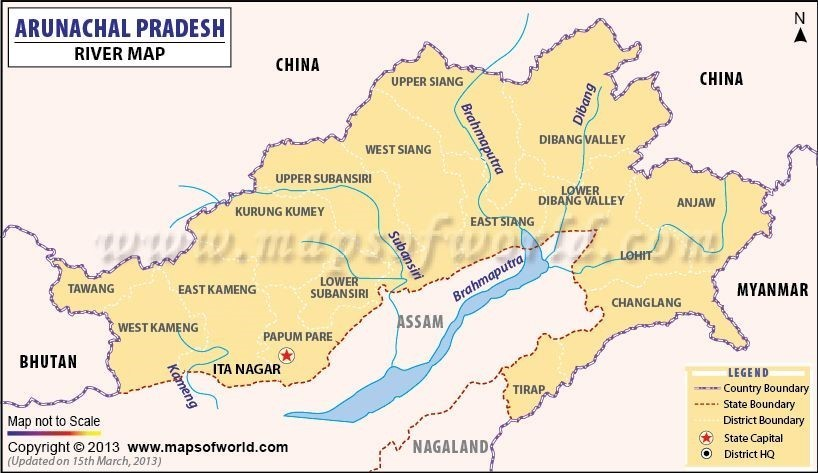SUBANSIRI LOWER HYDRO ELECTRIC PROJECT: INDIA’S LARGEST HYDROPOWER INITIATIVE
Why in the news?
A new Fisheries Management Plan was signed for the 2000 MW Subansiri Lower Hydro Electric Project in Assam, enhancing environmental sustainability efforts alongside its hydropower generation.
About the Subansiri Lower Hydro Electric Project (SLHEP):
A Memorandum of Agreement (MoA) was recently signed to implement a Fisheries Management Plan at the 2000 MW Subansiri Lower Hydro Electric Project (SLHEP) in Assam.
- The project is located on the Subansiri River, a significant tributary of the Brahmaputra, flowing through Arunachal Pradesh and Assam in northeastern India.
- With a total capacity of 2000 MW, this project is expected to become India’s largest hydroelectric plant upon completion.
Project Details and Structure:
- SLHEP is a gravity dam under construction on the Subansiri River, which flows from Tibet through Arunachal Pradesh and Assam, known for its rich natural resources.
- The project has a design capacity of 2000 MW, with eight generating units of 250 MW each, making it the most substantial run-of-river hydroelectric project in India.
- Being developed by the National Hydro Power Corporation (NHPC), the project aims to harness the river’s flow to generate renewable energy while supporting sustainable development in the region.
Environmental and Economic Impact:
- Once completed, the SLHEP is expected to contribute significantly to India’s renewable energy output, helping meet the country’s growing energy demands.
- The newly introduced Fisheries Management Plan is set to promote sustainable fisheries, addressing ecological concerns related to the river’s biodiversity and livelihoods of local fishing communities.
- The project aims to balance energy production with environmental sustainability, promoting responsible hydroelectric development in India’s northeastern region.
Key Facts about Subansiri River:
- The Subansiri is a trans-Himalayan river and the largest right-bank tributary of the Brahmaputra.
- Also known as the “Gold River” for its famous gold dust, it flows through Tibet (China), Arunachal Pradesh, and Assam.
- Originating in the Himalayas, it flows east-southeast to join the Brahmaputra in Assam’s Lakhimpur district.
- Spanning approximately 518 km, it has a drainage basin of 32,640 sq. km.
- Contributes 7.92% of Brahmaputra’s flow, with hydropower potential due to topographic variation.
Sources Referred:
PIB, The Hindu, Indian Express, Hindustan Times




